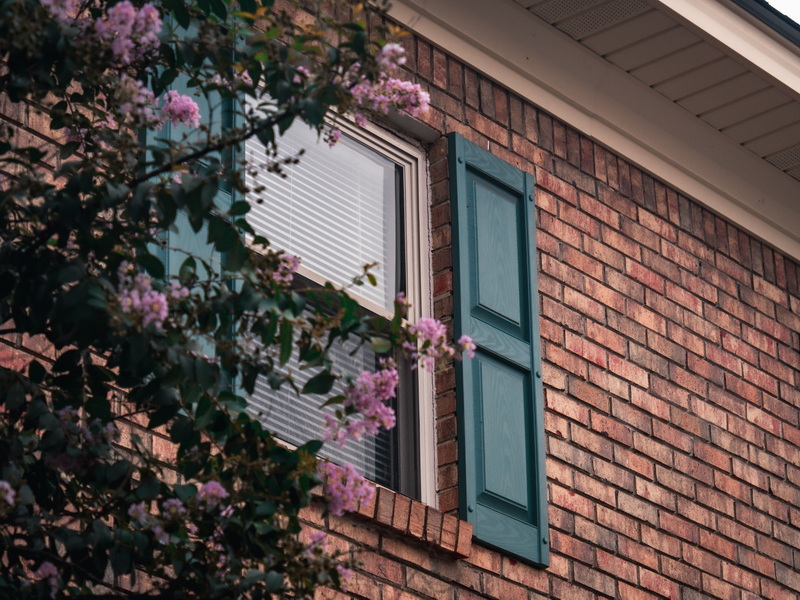English 




Views: 222 Author: Astin Publish Time: 2025-02-05 Origin: Site



Content Menu
● Preparation Steps Before Measuring
● Basic Measurement Techniques
● Special Considerations for Old Aluminum Windows
● Common Measuring Mistakes to Avoid
● Measuring for Replacement Windows
>> Frame-to-Frame Measurements
● Special Considerations for Multi-Panel Sliding Windows
● Professional Tips for Accurate Measurements
● Additional Factors to Consider When Replacing Windows
>> Window Styles and Materials
>> Local Building Codes and Regulations
● Hiring Professionals vs. DIY Installation
● Final Preparations Before Installation
● FAQ
>> 1. What tools do I need to measure my old aluminum windows?
>> 2. How do I know if my window frame is square?
>> 3. What should I do if my measurements are inconsistent?
>> 4. Is it necessary to measure depth when replacing standard windows?
>> 5. Can I replace my old aluminum windows myself?
Replacing old aluminum windows can significantly enhance your home's energy efficiency and aesthetic appeal. However, accurate measurements are crucial to ensure that the new windows fit perfectly. This comprehensive guide will walk you through the steps necessary to measure your old aluminum windows for replacement, highlighting common pitfalls and providing tips for success.

Before diving into the measurement process, it's important to familiarize yourself with the components of your aluminum windows. Typically, a window consists of:
- Frame: The structure that holds the window in place.
- Sash: The part of the window that holds the glass.
- Jambs: The vertical sides of the window frame.
- Sill: The horizontal bottom part of the frame.
Understanding these components will help you take precise measurements.
1. Clean the Window Frame: Remove any dirt or debris from the window frame. A clean surface will ensure more accurate measurements.
2. Gather Your Tools: You will need a tape measure (preferably a steel one for accuracy), a pencil, and a notepad to record your measurements.
To measure the width of your window:
- Measure from the inside edge of one jamb to the inside edge of the opposite jamb.
- Take three measurements: at the top, middle, and bottom of the window.
- Record the smallest measurement to account for any irregularities in the frame.
For height measurement:
- Measure from the top of the sill to the underside of the head jamb (the top part of the frame).
- Again, take three measurements: left side, center, and right side.
- Note down the smallest measurement.
Depth is less commonly measured but may be necessary for certain installations:
- Measure from the front edge of the window frame to the back edge where it meets the wall.
- This is particularly important if you are replacing windows with different thicknesses.
Old aluminum windows may have specific characteristics that affect measurements:
- Track Depth: If your windows slide open, measure the depth of the track where they slide.
- Weather Stripping: Be aware that weather stripping can add to the overall dimensions; include this in your measurements if it affects how your new windows will fit.

1. Incorrect Measurement Points: Always measure from inside edges rather than outside edges to ensure a proper fit.
2. Not Accounting for Track Depth: Failing to measure track depth can lead to windows that do not function properly.
3. Forgetting About Weather Stripping: Ignoring weather stripping can result in gaps that affect energy efficiency.
| Mistake | Description |
|---|---|
| Incorrect Measurement Points | Measuring from outside edges instead of inside |
| Not Accounting for Track Depth | Omitting track depth can lead to improper fit |
| Forgetting About Weather Stripping | Ignoring this can create gaps |
When measuring for replacement windows:
Measure both width and height of your current window frame accurately. This ensures that new windows will fit without needing extensive modifications.
Measure the rough opening (the space where your window will go) as well:
1. Width
2. Height
3. Depth
These measurements help ensure that any new framing needed fits correctly.
Multi-panel sliding windows require additional attention:
- Measure each panel individually.
- Account for spacing between panels.
- Consider features like locks or handles that may affect dimensions.
Experts recommend following these tips:
- Use a level to ensure your measurements are straight and true.
- Double-check all measurements before ordering new windows.
- Consult with professionals if unsure about specific measurements or installation techniques.
When selecting replacement windows, consider their energy efficiency ratings. Look for windows with low U-factors (which measure heat transfer) and high Solar Heat Gain Coefficients (SHGC). These ratings indicate how well a window insulates and how much solar heat it allows into your home. Energy-efficient windows can lead to significant savings on heating and cooling costs over time.
Replacement windows come in various styles, including double-hung, casement, sliding, and awning. Each style has its own advantages and disadvantages regarding ventilation, ease of cleaning, and aesthetic appeal. Additionally, while aluminum frames are durable and low-maintenance, consider other materials like vinyl or fiberglass for better insulation properties.
Before proceeding with your replacement project, check local building codes and regulations regarding window replacements. Some areas have specific requirements regarding energy efficiency standards or safety features like tempered glass in certain locations (e.g., near doors or on lower floors).
Deciding whether to hire professionals or tackle a DIY installation depends on several factors:
1. Skill Level: If you're comfortable with home improvement projects and have experience with carpentry or construction, you might consider doing it yourself.
2. Time Commitment: DIY installations can be time-consuming; if you're short on time or want a quick turnaround, hiring professionals may be best.
3. Warranty Considerations: Many window manufacturers require professional installation to maintain warranty coverage; check this before deciding on DIY.
Once you've taken accurate measurements and selected your new windows, prepare for installation:
1. Order Your Windows: Provide all measurements to your supplier when ordering new windows.
2. Remove Old Windows Carefully: If you're doing it yourself, follow proper procedures for removing old windows without damaging surrounding structures.
3. Check Weather Conditions: Plan installations during dry weather to avoid complications with moisture during installation.
Measuring old aluminum windows for replacement is a straightforward process if done correctly. By following this guide, you can ensure that your new windows will fit perfectly, enhancing both functionality and aesthetics in your home. Accurate measurements lead to successful installations and improved energy efficiency.
Taking into account factors such as energy efficiency ratings, window styles, local building codes, and whether to hire professionals or go DIY can further enhance your replacement project's success.

You need a steel tape measure, a pencil, and paper for notes.
Measure diagonally across both corners; if both measurements are within ¼ inch, your frame is square.
Measure again from multiple points and choose the smallest measurement to account for irregularities.
Depth is usually not necessary unless you're dealing with narrow openings or specialty windows.
Yes, but ensure you follow proper measuring and installation techniques or consult professionals if needed.
Top Aluminum Furnitures Manufacturers and Suppliers in Czech Republic
Top Aluminum Furnitures Manufacturers and Suppliers in Poland
Top Aluminum Furnitures Manufacturers and Suppliers in Belgium
Top Aluminum Furnitures Manufacturers and Suppliers in Finland
Top Aluminum Furnitures Manufacturers and Suppliers in Denmark
Top Aluminum Furnitures Manufacturers and Suppliers in Greece
Top Aluminum Furnitures Manufacturers and Suppliers in Portugal
Top Aluminum Furnitures Manufacturers and Suppliers in Austria
Top Aluminum Furnitures Manufacturers and Suppliers in Norway
Top Aluminum Furnitures Manufacturers and Suppliers in Sweden
